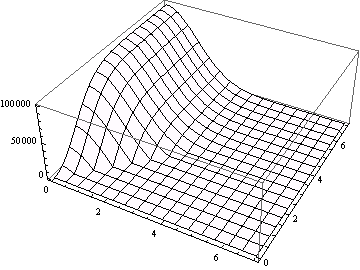I have a very large set of 2D points:
numberOf2DPoints = 10^6;
pointList = RandomReal[{0, 1000}, {numberOf2DPoints, 2}];
I'd like to find a way to quickly generate a distribution I can study for the number of points within a distance $r$ from each point, and then I'd like to select points that have at least a lowerbound $k_a$ and an upperbound $k_b$ number of points within a distance $r$ of themselves. Is there a way to use a function like Nearest to accomplish this?
Clarification --- The lowerbound $k_a$ and upperbound $k_b$ refers strictly to the count for the number of points in a circular disk of radius $r$ centered on a particular point (hopefully this makes sense). So I'd want basically a simple histogram for what this distribution of point counts looks like, and to select points that have satisfy the upper- and lowerbound point count criterion.

